Ecommerce App Development: Proven Steps and Insights to Build a Profitable App

The Internet has evolved from Information Superhighway into a mega shopping center.
Though the history of ecommerce stretches back to the late 1960s, the sector has only boomed fairly recently.
The surge of online purchases that began during the 2020 COVID pandemic is expected to maintain its momentum way into 2026, with the ecommerce market expected to grow to $5.4 trillion by that year.
That is why many entrepreneurs have capitalized on this sector, with the adventurous ones developing ecommerce apps.
Fortune favors the brave. And ecommerce still has room for the next big idea.
Discover in this blog why ecommerce app development sets you up for sustainable growth, the process of conceptualizing an original ecommerce app idea, and the steps involved in developing and launching it.
But before we delve deeper, let’s define ecommerce.
What’s an ecommerce app?
An ecommerce app is a program developed to facilitate online market transactions.
Ecommerce applications enable individuals and organizations to engage in the buying and selling of goods and services, as well as the transfer of funds or data. In essence, ecommerce apps help businesses earn from the exchange of goods, services, or information over the Internet.
For the sake of clarity, this article talks about ecommerce MOBILE APP development. It makes sense to focus on mobile phone-based ecommerce apps. Statistically speaking, almost everyone has a smartphone (the “Massive revenue potential” subsection discusses this). So developing these apps holds the most growth potential.
Now that you have a clearer understanding of an ecommerce app, it’s time to learn why it’s a good opportunity to develop one.
If you prefer, you may skip to the procedure involved in ecommerce app development.
3 Benefits of ecommerce app development
At Appetiser, we’ve earned our stripes in projects related to designing and developing ecommerce apps. From our experience, we’ve learned the following main advantages of ecommerce app development:
- Massive revenue potential
- Adaptation to evolving consumer behavior
- Better customer engagement
Let’s take a closer look at each.
1. Massive revenue potential
An increasingly wired world has made ecommerce apps quite indispensable. Statistics prove this point.
As of 2023, there are around 6.5 billion smartphones worldwide. This figure is expected to grow to 8 billion by 2028. This projection shows a mobile commerce app is the key to tapping into a vast potential market.
This great growth potential is not just an assumption. Actual companies have succeeded in expanding by harnessing the power of mobile ecommerce.
Take MyDeal, for instance.
The startup was one of the first in Australia to create a website that serves as an ecommerce platform. Sensing the impending boom from increased smartphone usage, MyDeal founder Sean Senvirtne enlisted our help in developing a mobile app so he could scale the business.
The result? The ecommerce app gave MyDeal around a 100% increase in gross sales in 2021 and a valuation worth around $200 million.
Read MyDeal’s case study to learn how we’ve helped the company expand through an app that can go head-to-head with the world’s most successful ecommerce apps.
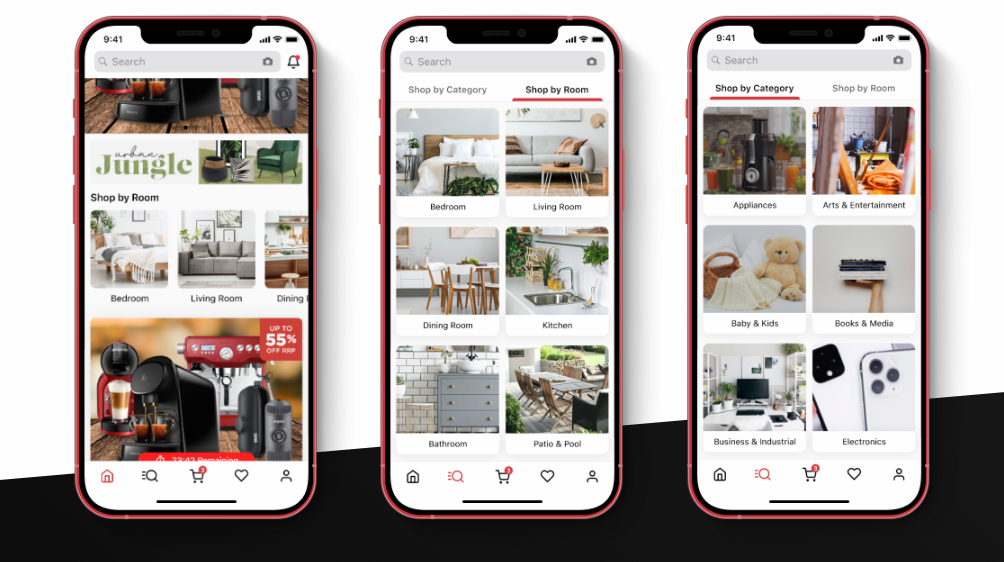
2. Adaptation to evolving consumer behavior
The pandemic-driven ecommerce boom has shifted how people shop. Developing an ecommerce app enables businesses to adapt to changing consumer preferences and take advantage of the growing online market.
Especially fond of online shopping is one worthwhile segment: the millennials.
A study indicates that around 70% of millennials prefer to spend “the same or more” online. The same survey also highlights that projected millennial spending power is slightly over $2 trillion. On top of all these, mobile commerce statistics forecast a sustainable increase in phone- and tablet-based shopping.
This shift in consumer behavior has become so significant that some online merchants have begun transforming their Shopify stores into mobile apps. Even many Magento store owners are not far behind in considering mobile app development.
Bottomline: Given the changing consumer trends, developing ecommerce apps is a good course of action to expand effectively.
3. Better customer engagement
Since many people worldwide already own smartphones, ecommerce apps are easily accessible meeting places for consumers and their favorite brands or entrepreneurs.
Aside from that, every tap of a button or swipe within an ecommerce app is traceable, thanks to mobile app analytics tools.
With these tools onboard, ecommerce apps could track and record what users want, what they hate, and where they’re having trouble. This valuable data helps inform marketing strategies to grow sales, enhance customer service, etc.
Google Analytics is one of the many tools that can track mobile app users to improve ecommerce business operations. Our article on retail apps for better store management delves deeper into how Google Analytics and other tools can help store owners up their game.
Now that you know how you can benefit from ecommerce app development, it’s time to dig into the entire process of ideating and launching your own ecommerce app.
The 7-Step Ecommerce App Development Process
The ecommerce app market may seem under the sway of giants like Amazon or Shopify. But with the right methodology, you could give these household names a run for their money.
Our product strategists and ecommerce app developers recommend these steps for creating apps that will enjoy long-term success:
- Brainstorm and research
- Outline your app’s basic features
- Consider baseline ecommerce app traits
- Select your platform
- Design your ecommerce app
- Begin app development
- Market, launch, and improve
Time to take a closer look at each.
Step 1: Brainstorm and research
The ecommerce app development process begins with this crucial tango between brainstorming and market research. Somewhere between these two lies your successful ecommerce app.
Brainstorming
One of the ways to conceptualize an app well is to conduct brainstorming sessions.
Brainstorming involves writing down all possible ideas you have about a new ecommerce app. No idea is ridiculous in the brainstorming phase.
Want to develop an app exclusively for selling ice cream? Write it down even if it seems impossible or odd. After all, your flights of fancy would be balanced out by market realities, as you will discover in the next section.
Some founders even build ecommerce apps around flexible fulfillment models, such as print on demand, where products are made only after an order is placed.
You could also involve your friends or colleagues in brainstorming different ecommerce app ideas.
Research
After you’ve written down every crazy (or reasonable) ecommerce app idea, go out into the market. You will conduct research on two groups within your target market: potential users and rival apps.
In their experience helping brands big and small succeed, our product strategists strongly recommend starting local, then going global. Interview or contact the people in your neighborhood, school, or community. You can ask them questions such as:
- What device are you using (Android or iOS) to access your ecommerce app?
- What do you think is lacking in that app?
- What products or services are you having difficulty purchasing online?
At the same time, check out your rival ecommerce apps. Analyzing competitors in the e-commerce market involves doing things like:
- Checking out books, journals, and user reviews for missing or inadequate app features from rival apps
- Understanding the promotional strategies and success timelines of competitors
- Learning about their product or service offerings
By conducting user analysis and competitor research, you will have a thorough understanding of your target market. This insight enables you to create an app that resonates with the intended users while credibly threatening rival apps. After all, many apps fail because few or no user wants them.
Pro Tip: If you lack the time for competitor analysis and market research, you could book a free consultation with our team of experts. They could guide you on the feasibility of your app idea in your potential market.
Step 2: Outline your app’s basic features
The next step is to come up with a list of your app’s basic features. To do so effectively, you have to consider two things:
- Results of your market research and brainstorming
- The MVP way of building apps
In the balance of these two lies your basic set of app features. Focusing on the basics keeps app development costs reasonable during your first app launch.
Results of your market research and brainstorming
Answering the following questions would help determine your final list of features:
- Which app ideas from your brainstorming sessions match the actual pain points of the potential users you interviewed in Step 1?
- What features or offerings do your potential users want from an ideal ecommerce app?
- What features of existing apps could you improve upon with your app?
Don’t worry if none of your brainstorming ideas matches market realities. Archive those ideas for now, as you may get inspiration from them in the future. But primarily, the market is the ultimate determinant of an ecommerce app’s effectiveness.
The MVP way of building apps
Including all the possible bells and whistles in your ecommerce app is tempting.
However, your app should be a minimum viable product (MVP) to keep costs manageable. An MVP is an app with just enough basic features to gain initial market traction while generating decent income from your app. Basically, an MVP is a working product that also acts as a tool to test how the market responds to your app.
Check out our guide on the MVP way of building apps and our article on successful MVP examples to learn more about this unique way of developing applications.
Step 3: Consider baseline ecommerce app traits
As a provider of ecommerce app development services, we have learned that a good app for mobile commerce should have at least the following characteristics to enjoy sustainable expansion:
- Security
- Stability
- Scalability
No matter how innovative your app’s features are, you cannot do without any of these.
Security
One crucial aspect to keep in mind when making ecommerce apps is the security of users’ private data.
Users are required to provide various pieces of information, including addresses, card numbers, email IDs, etc. The main concern is ensuring this data’s protection and preventing hacking and personal data leaks. Failing to guarantee data security exposes you to either a drop in the number of users or lawsuits in worst-case scenarios.
Though it’s unrealistic to think there is a bulletproof way to protect user data, modern encryption technologies offer the ability to build e-commerce apps that are highly secure against data theft. While investing in security measures like encryption may incur additional costs, it is ultimately rewarding in the long run.
Other ways you can protect user data include doing the following:
- Utilize a private cloud that ensures user information is stored securely.
- Establish access rules, such as granting certain services only to premium subscription users.
- Integrate a notification system within your ecommerce app to inform you of any threats to user data, allowing you to take immediate action to minimize negative consequences.
Stability
Ecommerce buyers typically don’t want to waste their valuable time on unstable or laggy apps. In fact, according to research by Google, around 30% of app users drop out due to unsatisfactory app performance.
Perhaps a business that knows well the value of a stable app is the giant restaurant chain Grill’d. The company approached us because it had a food-ordering app that frequently crashed. After we dealt with the app’s stability issues, we reduced its crash rate to 0.1% while attracting about 50% more users.
The Grill’d case study better explains how our ecommerce app development services were a crucial ingredient in cooking up the restaurant’s success.
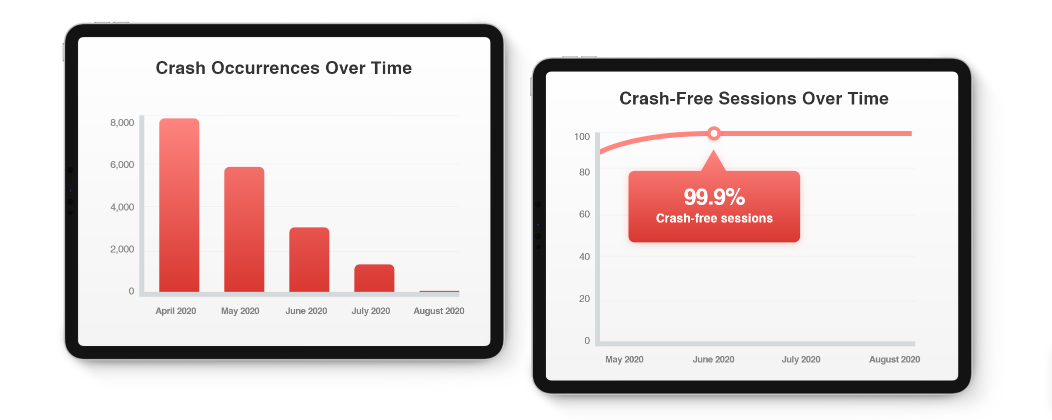
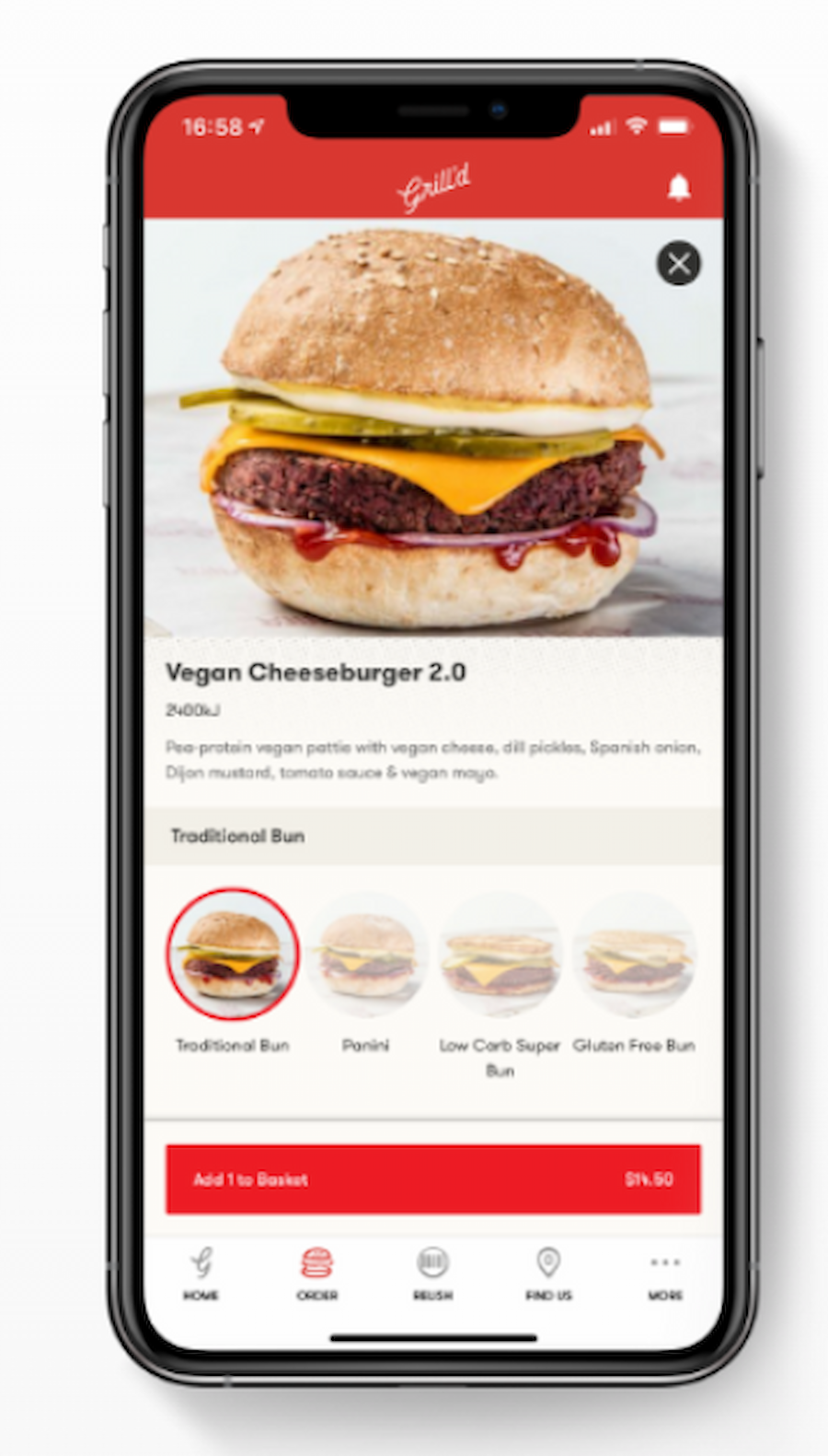
What is true for food-ordering apps is also true for ecommerce apps. If you want to be a credible player in the e-commerce mobile app development industry, do the following to ensure app stability:
- Conduct QA tests.
- Gather user feedback.
- Improve the app accordingly based on tests and feedback.
Do these even after launching your ecommerce app. Ensuring app stability is essential to drive sales and achieve a high ROI.
Scalability
Scalability is basically the capacity to accommodate future expansion.
To simplify this concept, imagine your ecommerce app is a restaurant. Following the MVP model of starting with the basics, you could begin by constructing a relatively small building where people could eat. However, make sure your property has an extra lot nearby, or you could add additional floors in case patrons start crowding your establishment.
Technically speaking, you can make your ecommerce application scalable by ensuring that your app’s architecture can handle an increasing workload. A scalable app maintains loading time efficiency, a fast average response time, and the capacity to process more requests per second, even if the number of users increases exponentially.
These performance metrics are crucial to improving user experience, ultimately leading to your app’s success.
Don’t worry if all these sound too technical. You could contact our product strategists if you have questions about integrating scalability in your apps.
Step 4: Select your platform
Currently, the most popular platforms in the world are Android and iOS.
Should you aim for users with Android phones? Or should you go for users with iOS devices?
Selecting the right platform is crucial so your app income will match your expectations. The following factors will help you decide which platform to choose:
- Location of your potential users
- Your ecommerce business model
Location of your potential users
Based on your market research in Step 1, determine where most of your app users will be located. Are they in North America, Asia, or Europe?
Different countries have varying market shares of Android and iOS users. For instance, if your users are in the United States, most of them have iOS devices. On the other hand, China has more Android users than those who use iOS.
Your ecommerce business model
Now the dominant platform per country is not the only factor you should consider.
In business, sheer customer volume is NOT ALWAYS the only way to make it big. For instance, a store might have fewer customers. But their high-value purchases are frequent enough to keep the store profitable.
A study shows that iOS users spend more on tech gadgets on average than their Android counterparts. So, if your target market has few iOS users, but your ecommerce app features a generous selection of consumer electronics, developing for iOS might not be a bad idea.
Ultimately, it all boils down to getting your market research right and knowing how you want to earn from your app.
Step 5: Design your ecommerce app
Once you’ve selected your platform and come up with your list of basic features, there is one step before building your ecommerce app. This step involves designing a prototype.
A prototype looks and feels like the ecommerce app you will develop, except it doesn’t allow users to buy goods or services. Instead, the person using the prototype can tap buttons and view app menus like they would in your actual app.
Prototypes are so “lifelike” that some investors actually pour money into an app development project after seeing a well-designed prototype. That’s what happened to our client Vello.
When Vello visionary and athlete Ben Dixon showed investors the prototype we designed for him, he garnered over $1 million, which he then used for app development.
Check out the Vello case study to learn how we helped him develop a social app that connects celebrities with their fans.


Going back to designing your e-commerce app prototype, note the following to build a prototype that could best attract your target market or potential investors:
- Intuitive navigation patterns
- Clear visual hierarchy
- Simple and consistent user interface
- Appropriate element layout
- Seamless login and checkout
- Colors that look good and are aligned with marketing psychology theories
Check out our article on user-centric ecommerce app design to learn more about the items discussed above.
Pro Tip: If you will outsource the design of your prototype, look for an ecommerce app development company that does both design and development work but charges separately for each. This facilitates project continuity while ensuring you control your app development costs.
Step 6: Begin app development
Once you have a working and feasible prototype, it’s time to turn it into a fully functional ecommerce app.
Effectively building your ecommerce app mainly entails selecting the right app development tools and methodologies . Once you get a handle on these things, you could start developing your app independently, hire in-house developers, or enlist the expertise of app agencies.
Tools
Plenty of programming languages exist by which you can develop apps.
At Appetiser, our developers can develop mobile apps for both the Android and iOS platforms using the Kotlin and Swift programming languages, respectively. We have chosen these languages to make our apps easily updatable and future-proof.
Methodologies
There are many app development methodologies out there. Choosing the best one is crucial to developing the best possible app while maintaining cost efficiency.
Our developers highly recommend using an Agile methodology called Kanban (check out our article on software development methodologies to learn more about this method of building apps).
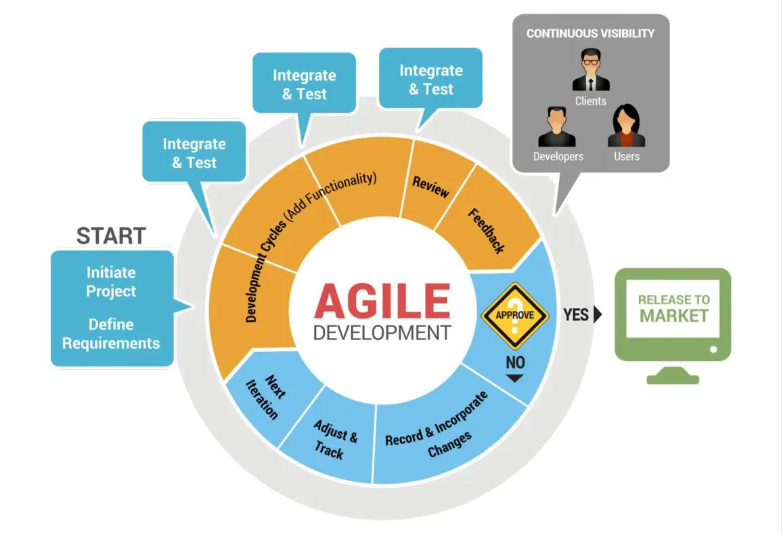
Source: CyberHoot
Basically, Kanban is all about the following principles:
- Visualizing work
- Limiting work in progress
- Continuously improving
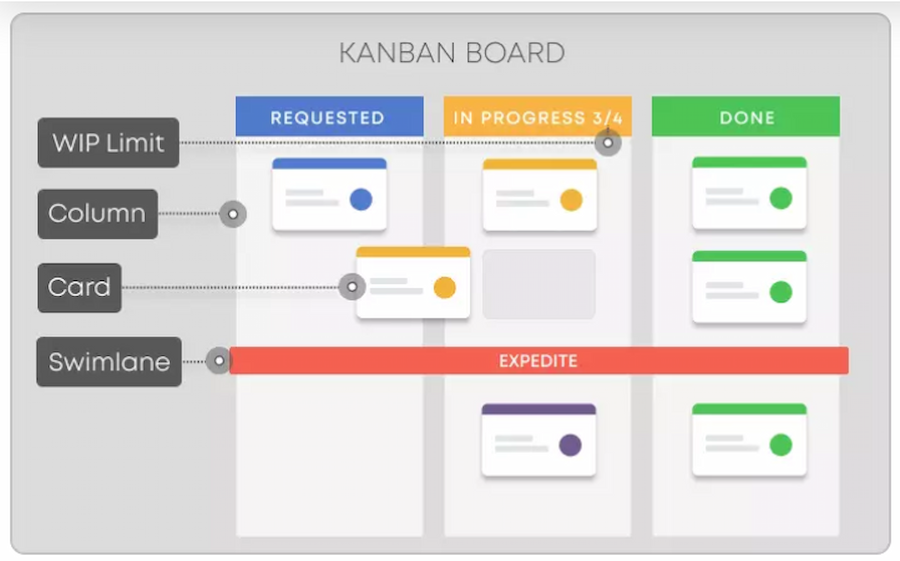
Source: Kanbanize
Our decision to adopt this method stems from our desire to empower clients by providing them control over the project and their budget.
Here’s a breakdown of how we apply the Kanban method:
- Initially, we organize our clients’ MVP feature requirements into Kanban months, creating a product development roadmap.
- Next, we assemble a team to collaborate with our clients to develop their apps. The complexity of project features and requirements will determine the size of the team.
- Following the priorities established in the roadmap, the development team will implement the required basic features according to the Kanban month schedule.
- We regularly meet with clients to see what they think of the apps we develop. Our team notes any feedback and improves the apps accordingly.
If you partner with us in developing your ecommerce app, our Kanban method will give you complete control over the extent of development you wish to undertake each month. You can easily scale up, reduce, or pause at any point without any constraints.
If any features exceed the allocated time, they will be moved to the following month, and adjustments will be made to the roadmap accordingly. Upon the completion of the Kanban months within the MVP scope, your app will be prepared for launch.
Ideally, all these tools and methodologies produce ecommerce apps that closely match what target users want. Once you’re done with development, you may launch the app to the market.
Step 7: Market, launch, and improve
The final step in ecommerce application development is actually more of a cycle than an endpoint. This means marketing and app improvement should be done regularly to ensure you’re always ahead of the competition.
Imagine you’re launching your new ecommerce app in the app stores. Even before you do this, it’s wise to engage in pre-launch marketing campaigns.
Pre-launch marketing is vital in generating buzz, sparking interest, and building anticipation for your app before its official launch. This approach enables you to reach a broader audience and generate excitement, leading to increased downloads and sign-ups once the app becomes available.
Consider creating a landing page or website to encourage maximum user sign-ups for your app.
When you’re ready to launch, ensure effective communication of your application’s unique value proposition by:
- Optimizing its app store page
- Implementing SEO best practices for your landing page
- Leveraging social media promotion
- Employing other powerful app marketing strategies
After the launch, do the following to ensure the continued growth and success of your ecommerce app business:
- Closely monitor key app metrics such as acquired active users and average session duration (how long users stay in your app) to identify areas that require improvement.
- Come up with an effective customer service strategy to address complaints and other concerns.
- Provide timely and relevant updates to handle bugs and enhance the overall user experience.
- Find innovative ways to keep promoting your app without saturating users with too much marketing content.
Explore ecommerce app development
Developing ecommerce apps is basically knowing a unique way to sell products and services and having a market that will buy into your idea. Even just a slight improvement to rival ecommerce apps could go a long way in helping you earn sustainably from your app business.
Now even though development tools like apps for Magento and Shopify app builders seem to be the easier way out, shortcuts seldom lead to sustainability.
What ecommerce businesses need for developing apps is a solid and collaborative partner that pushes the boundaries of technology in this space.
Appetiser is one such partner. We have become the top app agency in Australia and placed among the world’s best app designers. Don’t believe us? Ask Sean Senvirtne. Though he was not much of a techie, Sean was able to effectively scale his e-commerce business with our help.
We are also excited to explore and work with you as you flesh out your app idea. Drop us a line and let’s see how far your vision could go.
People also ask
1. What is an ecommerce app?
Think of it as a shopping mall that fits in your pocket, minus the parking headaches and food court smells. An ecommerce app is a mobile application that lets people browse, buy, and pay for products or services directly on their phone. The difference from a website? Apps cut out the friction, faster load times, stored preferences, and push notifications that bring your customers back, even when they weren’t planning to.
2. Why do businesses need an ecommerce app?
Because people don’t shop the way they used to. If you give a customer two options, type in a website address, or tap an icon they already trust on their phone, they’ll choose the latter almost every time. Apps drive higher engagement, bigger carts, and repeat purchases. In economics terms, the lower you make the transaction cost, the more transactions happen.
3. How much does ecommerce app development cost?
That’s like asking, “How much does a car cost?” The answer, it depends. A no-frills model can get you from A to B, but if you want luxury leather seats, custom rims, and an engine that purrs, you’ll pay more. The cost hinges on features, design complexity, and whether you’re building for iOS, Android, or both. The smarter play isn’t asking, “What’s the cheapest?” but “What gives me the most value for my budget?”
4. How long does it take to build an ecommerce app?
Short answer, anywhere from a few weeks to several months. Longer answer, it depends on what you’re building. A lean, MVP-style app, think essentials only, can be up and running quickly. A fully decked-out platform with custom integrations, loyalty systems, and advanced analytics will take more time. It’s a trade-off, speed to market vs. depth of features.
5. What features should an ecommerce app have?
Features are like toppings on a pizza, some are non-negotiable, some are nice-to-have. At the base level, you need product search, secure payments, a smooth checkout, and user accounts. On top of that, add features like push notifications, wishlists, social logins, AR try-ons, or personalized recommendations. The trick is not cramming everything in at once, but asking, what will actually make customers buy more, more often?
6. Can ecommerce apps integrate with my website or existing systems?
Absolutely. In fact, they should. An app that doesn’t talk to your inventory system is like a GPS that doesn’t know the roads, it’s useless. Done right, your app syncs with your website, POS, and CRM so customers get a seamless experience, and you get data that actually makes sense.
7. What’s the difference between native and hybrid apps for ecommerce?
Native apps are like tailored suits, built for a specific platform, iOS or Android, they fit better, feel smoother, and tend to impress. Hybrid apps are more like off-the-rack, they work across platforms, but you may sacrifice some polish and speed. The decision isn’t moral, it’s strategic. If you need the absolute best performance, go native. If speed and cost matter most, hybrid may do the job.
8. How can an ecommerce app improve customer experience?
By making shopping feel less like work. Personalized recommendations, one-click checkouts, instant support, these are not gimmicks, they’re psychological nudges. People want convenience, certainty, and a touch of delight. Every time you shave seconds off a checkout or predict what a customer wants, you increase the odds they’ll come back.
9. How do ecommerce apps generate revenue?
The obvious answer, by selling products. But smart apps go beyond that. Upsells, in-app ads, loyalty programs, and subscriptions can all add streams of revenue. The bigger insight, apps don’t just make you money directly, they make your customers stickier. Retention is revenue in disguise.
10. What’s the ROI of building an ecommerce app?
There’s no one-size-fits-all formula, but here’s the lens, look at customer lifetime value, CLV. Apps tend to boost CLV through repeat purchases, loyalty, and higher cart sizes. If your app costs $100k but increases CLV by 20% across thousands of customers, the math speaks for itself. ROI isn’t just sales, it’s the compounding effect of customer retention.

Jesus Carmelo Arguelles, aka Mel, is a Content Marketing Specialist by profession. Though he holds a bachelor’s degree in business administration, he also took courses in fields like computer troubleshooting and data analytics. He also has a wealth of experience in content writing, marketing, education, and customer support.


